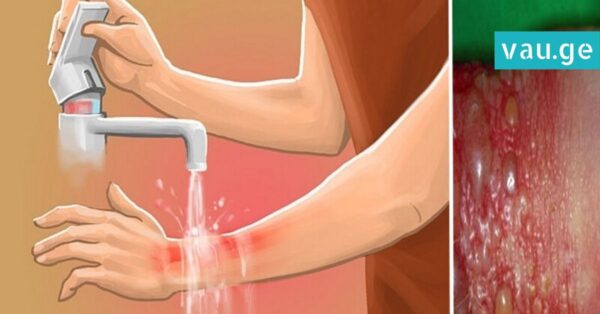First Aid for Burns: Essential Information Every Parent Should Know
Unfortunately, burn injuries are not rare. Just recently, we shared a heartbreaking story: a two-year-old child fell into a pot of boiling borscht. These types of incidents highlight a crucial truth—no one is immune to accidents. That’s why understanding how to respond in emergencies, especially burn-related ones, is knowledge every parent must have. In this article, we will discuss what to do when a burn occurs and how to respond appropriately, especially when children are involved.

Common Causes of Burns
Burns can happen in many ways and are typically caused by:
Direct contact with flames or fire
Hot liquids, such as boiling water or soups
Hot objects, like irons or stove surfaces
Electric currents
Chemical agents, such as acids or alkalis
Sun exposure, resulting in sunburn
Each of these causes can result in varying degrees of damage depending on the temperature or intensity, duration of contact, and the part of the body affected.
The Severity of Burns
The seriousness of a burn depends on three main factors:
How much of the body surface is affected
Which part of the body is burned
What caused the burn
Burns are categorized by degrees, and each degree reflects how deeply the skin has been damaged.
First-degree burns affect only the outer layer of the skin (epidermis). They typically cause redness and mild pain but usually heal within a few days with basic home care.
Second-degree burns (partial thickness) are more serious and involve blisters, swelling, and severe pain. The skin may look moist or wet due to fluid buildup.
Third-degree burns (full thickness) affect deeper layers of the skin and may even damage underlying tissues. These burns can appear white, brown, or charred. Paradoxically, they may not be painful in the center due to nerve damage. These burns require urgent medical care and often lead to scarring or require skin grafts.
Body Surface Area and Burn Assessment
To assess the extent of a burn, healthcare professionals estimate the percentage of body surface affected. For older children and adults, this estimation is commonly done using the “Rule of Nines”:
Each arm: 9%
Each leg: 18%
Front of the torso: 18%
Back of the torso: 18%
Head and neck: 9%
If more than 10% of the body surface is affected in a child, hospitalization is necessary.
Even first-degree burns that cover more than 5% of the body should be evaluated by a doctor.
When to Call a Doctor Immediately
Seek emergency medical help if:
There are fluid-filled blisters (suggesting second-degree burns)
The skin appears leathery, brown, or blackened (third-degree burns)
Burns are located on the face, hands, feet, genitals, eyes, or major joints
The child is breathing rapidly, panting, or showing signs of respiratory distress
The burn occurred in an enclosed space during a fire
The burn was caused by electricity, even if there are no visible injuries
The burn was caused by chemical exposure (acids or alkalis)
Additionally, your doctor may need to assess whether a tetanus immunization is needed.
First Aid Steps Before the Doctor Arrives
If your child suffers a burn, follow these steps immediately:
Remove clothing near the burned area, but do so carefully. If clothing sticks to the burn, do not pull it off forcefully.
Cool the burn with running cool (not cold) water for 5–10 minutes. This helps reduce pain and limits tissue damage. Do not use ointments, powders, or greasy substances like butter or oil.
Do not burst any blisters that form. They protect the skin and reduce infection risk.
Cover the burn with a sterile gauze or clean, non-stick cloth. Avoid fluffy cotton that can stick to the wound.
Use a cold compress—such as ice wrapped in a cloth—for up to 15 minutes to relieve pain, but never place ice directly on the skin.
Give appropriate pain relief, such as paracetamol (acetaminophen) or ibuprofen, in doses suitable for the child’s age.
Encourage fluid intake. Burns can cause dehydration, so make sure the child drinks plenty of water.
Special Cases: Chemical Burns
If the burn was caused by a chemical substance:
Rinse the affected area thoroughly with running water for at least 30 minutes. If the chemical entered the eyes, gently flush with clean water during the entire period without delay.
Remove contaminated clothing carefully. If the fabric is sticking to the skin, wet it with warm water to ease removal.
When changing dressings, continue to clean the affected skin with mild soap and warm water.
If the burn was caused by tar or resin, you can gently remove the substance using vegetable oil, then rinse the area thoroughly.
Always contact your doctor or visit a clinic for further evaluation after a chemical burn.
Preventing Burns at Home: A Parent’s Checklist
Preventing burns is always better than treating them. Here are some essential precautions for parents:
Keep hot appliances such as heaters, stoves, irons, and kettles out of children’s reach
Store matches, lighters, and flammable liquids in locked or high cabinets
Lower the temperature on water heaters to reduce the risk of scalds
Use barriers or safety gates around fireplaces and radiators
Install temperature indicators or faucet guards in bathrooms
Never leave young children unattended near hot liquids or cooking areas
Have a fire escape plan and practice it regularly with the family
Burns can happen in a split second, but the effects can last a lifetime. Being prepared and knowing how to act quickly can save your child from unnecessary pain and long-term complications. Every parent should take time to learn these first aid steps—it’s one of the best ways to protect your little one.












